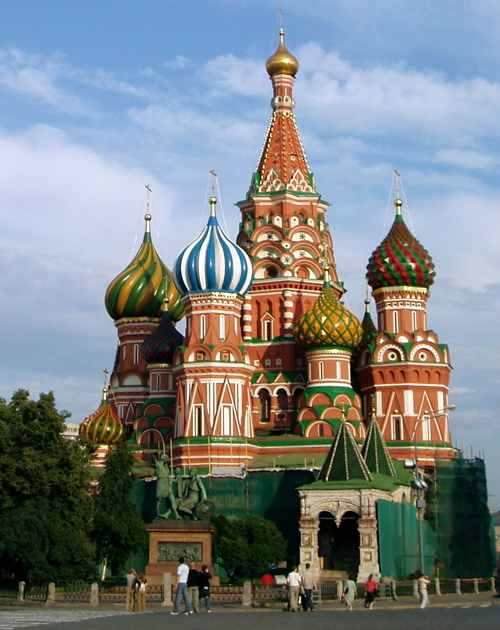Heritage Language: Russian

St.Basil's Cathedral
Introduction
According to the 2006 census, 500,600 people in Canada declared their origin as Russian. However, only 98,245 of these were single responses, with 402,360 multiple responses. These responses reflect how long Russian immigrants have been in Canada.
The history of Russian immigration to Canada is a very vast one. Most early immigrants were peasants who found work in various industries. After WWI many of the one million Russians (the majority of them agricultural and industrial labourers) fleeing the effects of the Russian Revolution sought admission to Canada. Men willing to work as farm labourers, loggers and miners were preferred immigrants in Canada, but those Russian intellectuals who gained admittance and managed to continue in their own professions did outstanding work in many fields. Leonid I. Strakhovsky (1898-1963) pioneered Slavic studies at the University of Toronto. Boris P. Babkin (1877-1950) resumed his career in gastroenterology at Dalhousie and McGill universities. Nicholas, Vladimir, Alexis and George Ignatieff, the 4 sons of Count Paul Ignatieff, the last minister of education under Tsar Nicholas II, made important contributions to engineering and government. Paraskeva Clark (née Plistik) became a well-known painter. Some Russians-Canadians joined the Canadian MacKenzie-Papineau Battalion, which fought on the Republican side during the Spanish Civil War.
The Great Depression and WWII virtually halted immigration of all nationalities, but between 1948 and 1953 a significant number of Russians immigrated to Canada. They included some who had originally left Russia and settled in Europe, but the majority were among the millions of displaced person who found themselves in Germany after the war either because they opposed Stalin or because they had been sent there as forced labour. Both groups were generally young, well educated, urban-oriented and aware of their Russian heritage.
After 1953 Russian immigration declined severely (in the early 1970s the average per year from all of the Soviet Union was only 230), although the Soviet government began at that time to allow the emigration of some Jews. By the late 1980s, about 1,500 Soviet Jewish immigrants had been admitted to Canada. Since the dissolution of the Soviet Union in December of 1991, Russian Jews have continued to be an important part of immigration from the Russian Federation to many countries, including Canada.
Authors: Jerry Dyakov and Valeriya Mordvinova